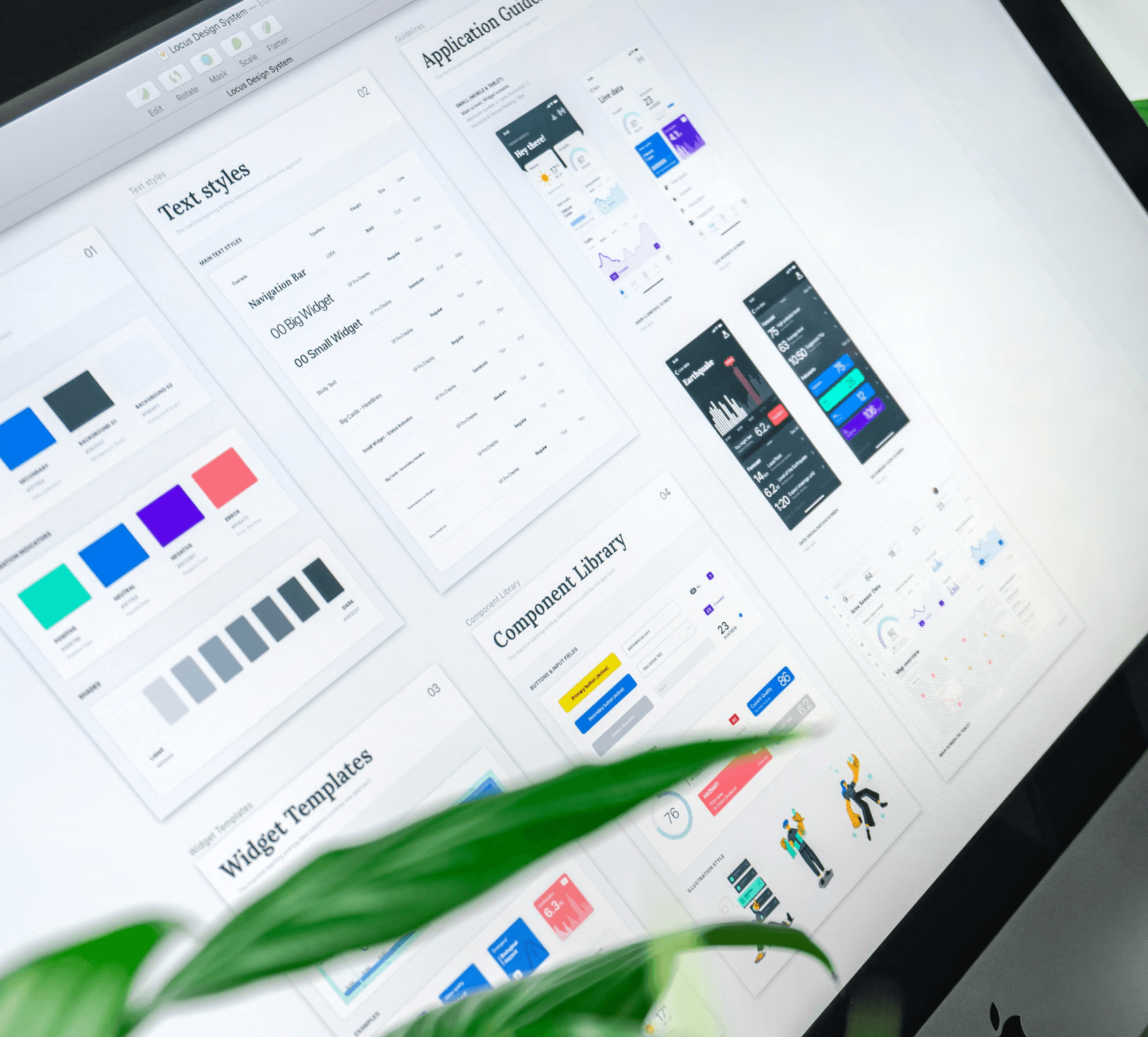
Create Design System as a Product
How I manage a Design System to help front team be more efficient and limit design drift and debt
In my role as a Senior Product Designer, I've identified a major challenge we face: the drift between design and implementation. This drift often stems from communication issues between design and development teams. At times, initial mockups aren't based on a design system, leading to varying interpretations and discrepancies during implementation.
To tackle this challenge, I've implemented several effective strategies. Firstly, I've integrated the use of Figma variables into our mockups. This ensures that styles and components are consistently defined from the outset of the design process. Consequently, when front-end teams review the mockups, they have access to the same visual references as I do, reducing the risk of drift.
Additionally, I've established a mirror design system with Storybook. This platform provides a controlled development environment where front-end teams can view each component in its context and variations. This helps them better understand the original design intentions and ensure faithful integration.
To ensure complete traceability of design system changes, I've integrated the use of Jira into our process. Each design system change is documented and tracked through Jira tickets. This fosters transparent collaboration between design and development teams, ensuring all stakeholders are informed of design system evolutions.
Finally, I've integrated design system delivery processes into our product lifecycle. This means that design system updates are proactively handled, with clear processes for integrating them into our final products. By following this process, we mitigate the risk of drift and ensure a consistent, high-quality user experience.
By combining these strategies, I've effectively helped front-end teams integrate design without drift, overcoming communication barriers and establishing clear processes to maintain consistency between design and implementation.

Create Design System as a Product
How I manage a Design System to help front team be more efficient and limit design drift and debt
In my role as a Senior Product Designer, I've identified a major challenge we face: the drift between design and implementation. This drift often stems from communication issues between design and development teams. At times, initial mockups aren't based on a design system, leading to varying interpretations and discrepancies during implementation.
To tackle this challenge, I've implemented several effective strategies. Firstly, I've integrated the use of Figma variables into our mockups. This ensures that styles and components are consistently defined from the outset of the design process. Consequently, when front-end teams review the mockups, they have access to the same visual references as I do, reducing the risk of drift.
Additionally, I've established a mirror design system with Storybook. This platform provides a controlled development environment where front-end teams can view each component in its context and variations. This helps them better understand the original design intentions and ensure faithful integration.
To ensure complete traceability of design system changes, I've integrated the use of Jira into our process. Each design system change is documented and tracked through Jira tickets. This fosters transparent collaboration between design and development teams, ensuring all stakeholders are informed of design system evolutions.
Finally, I've integrated design system delivery processes into our product lifecycle. This means that design system updates are proactively handled, with clear processes for integrating them into our final products. By following this process, we mitigate the risk of drift and ensure a consistent, high-quality user experience.
By combining these strategies, I've effectively helped front-end teams integrate design without drift, overcoming communication barriers and establishing clear processes to maintain consistency between design and implementation.

Create Design System as a Product
How I manage a Design System to help front team be more efficient and limit design drift and debt
In my role as a Senior Product Designer, I've identified a major challenge we face: the drift between design and implementation. This drift often stems from communication issues between design and development teams. At times, initial mockups aren't based on a design system, leading to varying interpretations and discrepancies during implementation.
To tackle this challenge, I've implemented several effective strategies. Firstly, I've integrated the use of Figma variables into our mockups. This ensures that styles and components are consistently defined from the outset of the design process. Consequently, when front-end teams review the mockups, they have access to the same visual references as I do, reducing the risk of drift.
Additionally, I've established a mirror design system with Storybook. This platform provides a controlled development environment where front-end teams can view each component in its context and variations. This helps them better understand the original design intentions and ensure faithful integration.
To ensure complete traceability of design system changes, I've integrated the use of Jira into our process. Each design system change is documented and tracked through Jira tickets. This fosters transparent collaboration between design and development teams, ensuring all stakeholders are informed of design system evolutions.
Finally, I've integrated design system delivery processes into our product lifecycle. This means that design system updates are proactively handled, with clear processes for integrating them into our final products. By following this process, we mitigate the risk of drift and ensure a consistent, high-quality user experience.
By combining these strategies, I've effectively helped front-end teams integrate design without drift, overcoming communication barriers and establishing clear processes to maintain consistency between design and implementation.

Create Design System as a Product
How I manage a Design System to help front team be more efficient and limit design drift and debt
In my role as a Senior Product Designer, I've identified a major challenge we face: the drift between design and implementation. This drift often stems from communication issues between design and development teams. At times, initial mockups aren't based on a design system, leading to varying interpretations and discrepancies during implementation.
To tackle this challenge, I've implemented several effective strategies. Firstly, I've integrated the use of Figma variables into our mockups. This ensures that styles and components are consistently defined from the outset of the design process. Consequently, when front-end teams review the mockups, they have access to the same visual references as I do, reducing the risk of drift.
Additionally, I've established a mirror design system with Storybook. This platform provides a controlled development environment where front-end teams can view each component in its context and variations. This helps them better understand the original design intentions and ensure faithful integration.
To ensure complete traceability of design system changes, I've integrated the use of Jira into our process. Each design system change is documented and tracked through Jira tickets. This fosters transparent collaboration between design and development teams, ensuring all stakeholders are informed of design system evolutions.
Finally, I've integrated design system delivery processes into our product lifecycle. This means that design system updates are proactively handled, with clear processes for integrating them into our final products. By following this process, we mitigate the risk of drift and ensure a consistent, high-quality user experience.
By combining these strategies, I've effectively helped front-end teams integrate design without drift, overcoming communication barriers and establishing clear processes to maintain consistency between design and implementation.

Create Design System as a Product
How I manage a Design System to help front team be more efficient and limit design drift and debt
In my role as a Senior Product Designer, I've identified a major challenge we face: the drift between design and implementation. This drift often stems from communication issues between design and development teams. At times, initial mockups aren't based on a design system, leading to varying interpretations and discrepancies during implementation.
To tackle this challenge, I've implemented several effective strategies. Firstly, I've integrated the use of Figma variables into our mockups. This ensures that styles and components are consistently defined from the outset of the design process. Consequently, when front-end teams review the mockups, they have access to the same visual references as I do, reducing the risk of drift.
Additionally, I've established a mirror design system with Storybook. This platform provides a controlled development environment where front-end teams can view each component in its context and variations. This helps them better understand the original design intentions and ensure faithful integration.
To ensure complete traceability of design system changes, I've integrated the use of Jira into our process. Each design system change is documented and tracked through Jira tickets. This fosters transparent collaboration between design and development teams, ensuring all stakeholders are informed of design system evolutions.
Finally, I've integrated design system delivery processes into our product lifecycle. This means that design system updates are proactively handled, with clear processes for integrating them into our final products. By following this process, we mitigate the risk of drift and ensure a consistent, high-quality user experience.
By combining these strategies, I've effectively helped front-end teams integrate design without drift, overcoming communication barriers and establishing clear processes to maintain consistency between design and implementation.
Other EXPERIENCES

How I manage technical context to craft accessible user journeys and bring insight to the product team
Other EXPERIENCES

How I manage technical context to craft accessible user journeys and bring insight to the product team
Other EXPERIENCES

How I manage technical context to craft accessible user journeys and bring insight to the product team
Other EXPERIENCES

How I manage technical context to craft accessible user journeys and bring insight to the product team
Other EXPERIENCES

How I manage technical context to craft accessible user journeys and bring insight to the product team



